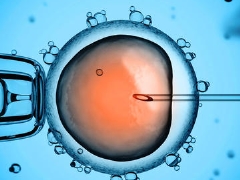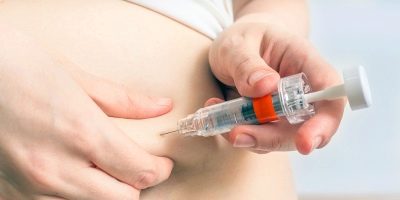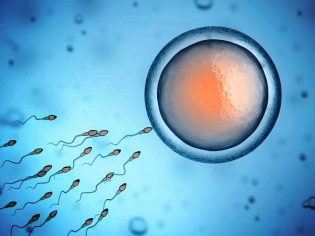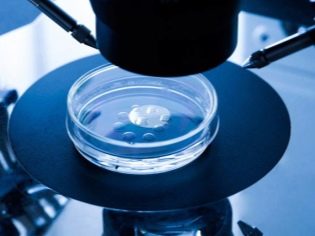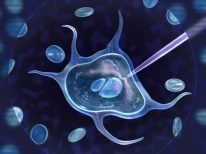All statistics on IVF: from the probability of pregnancy from the first time to the percentage of complications
Planning in vitro fertilization I want to know how successful their attempt can be and what complications can arise on the way to a long-awaited pregnancy. Many clinics support reproductive services and claim that they have “a high percentage of successful protocols on the first try,” and the couple really want to believe in it. Of course, “high interest rates” are mentioned for promotional purposes, and this is quite understandable, because the desire to have a child is so great that common sense is asleep at that moment. In this article, we collected all the statistics on IVF in Russia. Compare, think, draw your own conclusions.
About numbers and facts
First of all, it should be noted that statistics is a stubborn thing, of course, but experience shows that it can bend under the interests of those who use it. Interests are quite understandable - benefit, profit, prestige. Thus, each clinic and each reproductive center in Russia conducts its own statistics of successful and unsuccessful IVF attempts, but not every clinic will use real numbers on its website or in conversation with potential clients. In order to interest clients (and IVF is an expensive procedure), sometimes Russian-wide numbers are taken and they are slightly “embellished”, because the patient is practically unable to check the veracity of the clinic.
We did not begin to rely on the statistics of individual clinics for the selection of the most truthful data, since it cannot be considered reliable. For this article, we used data from a large-scale study of the European Center for Reproduction and Embryology, which annually prepares reports on the state and problems of reproductive techniques in the world for WHO (World Health Organization). This data is devoid of commercial background, and therefore more credible.
About demand
The method of in vitro fertilization (IVF) has been practiced in the world for four decades. During this time, about 5 million children appeared on the planet due to the method of fertilization outside the maternal organism (in vitro, “in vitro”). Infertility - the problem is much more common than it might seem at first glance. About 20% of couples are confronted with some form of female, male or mutual infertility. Most of the reasons that lead to the lack of the ability to conceive a baby are disposable by other methods - medically, surgically. IVF is required in about 25% of infertility cases.
Every year, Russian doctors spend about 70 thousand IVF protocols. About 18% of them are spent on quota at the expense of (and with the participation of) funds from regional and federal budgets (under the OMS policy). Due to the fact that the IVF program in 2012 was recognized at the state level and supported both legislatively and financially, the number of children conceived in the "test tube" and born only thanks to the efforts of doctors, is rapidly growing. In 2017-2018, the percentage of eco-kids among the total mass of newborn Russians and Russians was 0.7-1.5% (depending on the region of the country).
Who does IVF and why?
Among patients of clinics in Russia - people of different ages, but most often women between the ages of 32 and 35 seek for reproductive help - almost 80% of them.The standard of living of these patients, according to the study, is above average. It affects the considerable cost of such services (by the way, according to statistics in 2018 in Russia, it averages from 140 to 250 thousand rubles). Even for the OMS procedure will not be completely free, the amount of surcharge can range from several thousand rubles to several hundred thousand rubles.
Among the reasons for which in vitro fertilization is shown by couples, there are no definite “leaders.” Male infertility factors account for about 45% of all cases of IVF, and female factors account for about 40%. The rest of the reasons are reciprocal reasons for which a natural pregnancy does not occur due to a combination of factors on the part of both spouses, or no reasons have been identified.
87% of couples are legally married, about 11% are not registered couples, but living together. About 2% of reproduction clients are single women with various forms of infertility and no regular partner, about 0.1% of patients are single men who want to raise and raise their own child, who the surrogate mother makes for them.
Among patients who first apply for IVF, the average length of "fruitlessness" exceeds 6-7 years. Up to 90% of patients undergo IVF other methods of infertility treatment. Women are more worried about the results and consequences of in vitro fertilization, because only they turn to psychotherapists at clinics for support during treatment. There were no men at the reception yet.
Among the methods prevails is traditional IVF, in which the eggs are fertilized in a laboratory Petri dish, and then transferred to the uterine cavity after a few days. ICSI (intracytoplasmic injection of sperm, in which the sperm is “manually” injected into the egg cell) accounts for about 40% of all IVF protocols. IMSI (sperm screening method for introduction into the egg cell) is required in 89% of ICSI cases.
Pre-implantation diagnosis (at the request of patients or a strong recommendation of genetics) is performed in approximately 30% of IVF cases. Basically, it is relevant for "age-related" moms and dads, as well as for those who in the family had cases of genetic abnormalities. This diagnosis allows the selection of embryos on the genetic principle. Only healthy embryos will be repotted.
Successful Protocols
The successful protocol is the one that ended with the onset of pregnancy. Success depends on many reasons. If we consider different types of protocols, the greatest chance of success from the first time gives IVF with hormonal stimulation - from 35 to 45% of the protocols end with the onset of pregnancy.
Protocols in the natural cycle without hormonal support from the first attempt become successful only in 10-11% of cases. Cryoprotocols, which use previously frozen eggs or spermatozoa, as well as cryopreserved embryos, are successful in 25-27% of cases from the first time.
IVF with the use of donor material has a rather high compared with other types of performance - up to 47% of successful protocols. The combination of IVF + ICSI allows you to get pregnant with one attempt about 36% of couples.
If the couple could not get pregnant before IVF for 3 years, the chances of conceiving in the baseline - about 30%. If the infertility experience is 3-6 years, the probability decreases to 27%, and after 6 years of infertility - 24%. After a decade of unsuccessful attempts to conceive a baby, the chances of a successful protocol from the first attempt do not exceed 18%.
Repeat protocols are usually more successful than the first. On the second protocol, the chances of getting pregnant are increased by 5%, on the third - by 8-10%, however, after the 3-4 protocol, the chances usually do not increase, and in some cases they begin to decline below the base average value of 30%.
The largest number of successful protocols is recorded if the woman is under the age of 32 years.After 40 years, the probability of implantation of embryos after transfer decreases to 11%, and after 43 years - to 8%.
After the first unsuccessful protocol in the period of rest and recovery between the first and the second, pregnancy can also occur naturally due to hormonal stimulation experienced. This happens in 25% of cases.
The best results for IVF were observed with obstruction of the fallopian tubes. With this diagnosis, more than 55% of women become pregnant. With infertility caused by hormonal imbalances, IVF helps 45% of women to become mothers. With quite serious forms of endometriosis, the percentage of successful protocols is 43%, with polycystic ovaries - 49%, with unknown causes, pregnancy occurs in 25% of cases, male forms of childlessness are safely resolved by IVF in 49% of cases. If both spouses are barren, IVF is successful in 20% of cases.
Complications
The deterioration of well-being in the process of hormone therapy is noted by about 75% of women. About half of all patients complain of weight gain and nausea. However, negative consequences and complications do not occur as often as women themselves think.
For example, ovarian hyperstimulation syndrome occurs in 2.5% of all protocols with stimulation in the last two years. Multiple pregnancy after replanting 2 embryos develops in about 40-45% of cases. A couple of them must be warned about this when joining the protocol, and the patient has the right to refuse to transfer several embryos, giving consent for only one, but the probability of pregnancy will decrease approximately twice.
The likelihood of endocrine diseases in a woman after giving birth to an IVF baby is 20%, this is the result of aggressive hormone therapy, which the woman received at the preparatory stage for fertilization and embryo transfer.
But the probability of cancer after IVF, according to official data of the European Center for Reproduction and Embryology, does not exceed 0.00001%. Cancer can develop only when a woman already had tumor processes before IVF, they simply were not diagnosed. In this case, the hormones will provoke the growth of malignant cells and the disease some time after birth will be felt. Although in this matter, doctors and scientists have not yet come to a common opinion.
Pregnancy and childbirth
Unfortunately, out of the absolute number of women who become pregnant through IVF, women only give about 80% of their babies to birth. Two out of ten pregnant women again go into the category of planning motherhood, because the pregnancy is terminated. In 90% of cases it occurs in the early stages (up to 12 weeks), the most common causes are miscarriage, missed abortion. The probability of ectopic pregnancy after IVF is low - no more than 2%. Those who bear double, triple risks higher, especially in the second and third trimester.
In the middle and last third of pregnancy after IVF, preterm delivery is considered the main threat - they end up to 30% of pregnancies after IVF. The reasons may be different, often pathologies and placenta previa, its premature aging, preeclampsia, polyhydramnios or low water, and multiple fetuses are often found as complications of pregnancy.
Without problems and complications, only 15% of women manage to report a pregnancy after IVF. The rest recorded certain pathologies, complications that require constant medical supervision, and sometimes intervention. Up to 85% of all full-term pregnancies are completed with a cesarean section. Not because women can not give birth themselves. Just such a practice has developed in the Russian gynecology and obstetrics - doctors prefer not to risk the health of the mother and fetus in childbirth and for pregnant ECO-shnitsam is prescribed a planned operation.
ECO-children
For a long time, there have been rumors in society that children conceived in a test tube are different from other children.Today, myths are gradually being debunked, since enough information has been accumulated to take stock of the first results of a 40-year application of the in vitro fertilization method. So, the assertions that IVF children are fruitless are not true. The first children who were born through IVF, quite successfully managed to add their own children in a completely natural way.
It is also not true that after the IVF there is an increased risk of having a sick child. The Russian Association of Human Reproduction in one study studied almost 30 thousand IVF protocols, which resulted in pregnancy and childbirth. It is clear that The percentage of children born with certain pathologies does not exceed the similar indicators in children who were conceived naturally.
After birth, IVF children develop even ahead of the development calendar. Pediatricians say that such children are less likely to get sick, in general, their health condition is somewhat better than that of their peers, who were conceived in bed and not in a test tube. This can be explained by more careful selection of germ cells, monitoring the development of a fertilized egg and the plumb of a low-quality biomaterial.
However, the percentage of children with congenital abnormalities (about 0.02% of the total number of newborns) after IVF also has its own explanation. Artificial insemination, especially ICSI, deprives the process of conception of such an important evolutionary factor as natural selection. Sperm - the carrier of the mutant gene in the natural environment is likely to die, it will be ahead of more healthy "colleagues." With ICSI, it enters the egg through the efforts of fertility specialists. Therefore, the percentage of congenital diseases after ICSI is slightly higher - 0.5%.
The probability of the birth of boys and girls after IVF is approximately equal. After ICSI, girls are born more often, but the difference is small - 52% of girls versus 48% of boys.
World statistics
For some reason, Russians are accustomed to thinking that in foreign clinics IVF is being done more successfully. World statistics collected by WHO does not demonstrate this trend, but reveals several interesting nuances:
- IN USA Over the past year, many eco-babies have been born, their share in the total number of newborns is almost 1.9%. However, the effectiveness of IVF there does not exceed the Russian - on average, it was 36% at the first attempt and 45% at the second.
- In Israelwhere special attention is given to IVF (the state pays for attempts to infertile couples until they have two children), the IVF protocol’s performance reaches 55% and this is the highest result in the world. However, the cost of the protocol, unlike the Russian one, is almost 2.5 times higher.
- In south korea the number of successful protocols from the first time is at 39%, but only for their own. Statistics on foreign patients who come to Korea for the treatment of infertility, and on the basis of local clinics are IVF, above - almost 50%. With what it is connected, it is difficult to say unequivocally, perhaps with the mentality of the Koreans, which can be summarized briefly: “All the best to the guest! ".
By the way, in 5% of cases, infertility, which was announced as a verdict to a couple in Russia, is not confirmed by Korean doctors. In this case, the couple is treated differently, which quite often helps them become pregnant naturally.
The following video shows in detail how IVF is done by medical manipulation, the timing of the procedure, and an explanation of the subtleties of the assisted reproductive technologies used.
